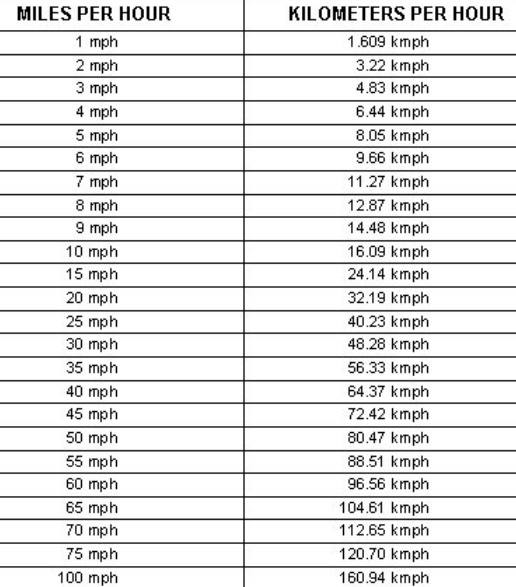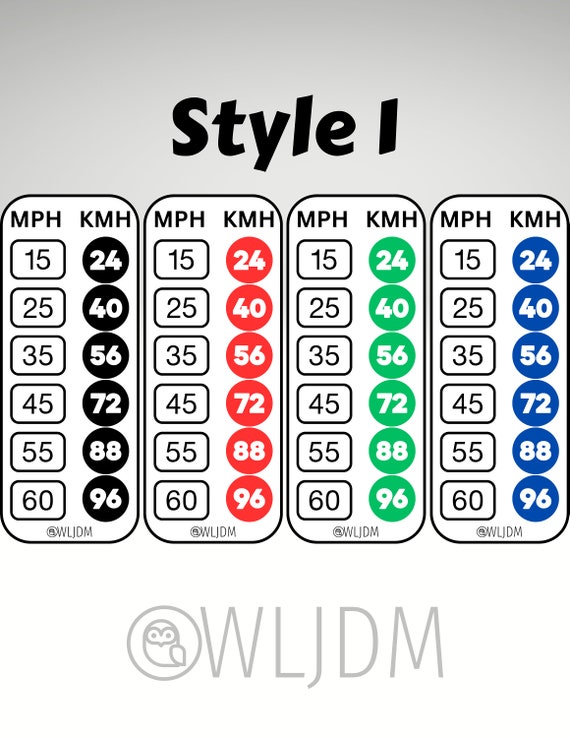Speed is all about perception, right? But when we talk about 500 km/h, things get real interesting. Whether you're a car enthusiast, a jet pilot, or just someone curious about how fast that actually is in mph, you're in the right place. Today, we're diving deep into the world of speed conversions, breaking down the math, and uncovering what 500 km/h truly means in real-world terms. So buckle up and let’s hit the gas!
Now, you might be wondering why this matters. Well, understanding speed conversions can help you grasp the capabilities of high-performance machines, whether it’s a supersonic jet, a Formula 1 car, or even a rocket ship. Plus, it’s just cool to know how fast things move in different units, right?
Before we dive into the nitty-gritty, let’s set the stage. Converting kilometers per hour (km/h) to miles per hour (mph) might seem like a math problem from high school, but trust me, it’s way more exciting than you think. So, let’s get started and make sense of it all!
Read also:Hoziers Wife The Untold Story Of The Woman Behind The Irish Music Icon
Table of Contents
- The Conversion: How Fast is 500 km/h in MPH?
- The Formula Behind the Conversion
- Real-World Examples of 500 km/h
- Comparing Speeds: What Moves at 500 km/h?
- Mach Speed: Is 500 km/h Supersonic?
- A Brief History of Speed
- The Technology Behind High-Speed Machines
- Safety Concerns at High Speeds
- The Future of Speed
- Frequently Asked Questions
The Conversion: How Fast is 500 km/h in MPH?
Alright, here’s the big reveal. When you convert 500 km/h to mph, you’re looking at approximately 310.686 mph. That’s blazing fast, folks! But how do we get that number? Let’s break it down step by step.
First off, the conversion factor between km/h and mph is simple: 1 kilometer per hour equals roughly 0.621371 miles per hour. So, when you multiply 500 by 0.621371, you get 310.686. Easy peasy, right?
But let’s not stop there. Understanding this conversion isn’t just about numbers; it’s about context. Imagine a car traveling at 500 km/h. That’s faster than most commercial airplanes during takeoff! It’s the kind of speed that makes your jaw drop and your heart race.
Why Does This Matter?
Knowing how fast 500 km/h is in mph can be useful in many situations. For example:
- If you’re planning a road trip in a country that uses mph instead of km/h.
- If you’re comparing the speeds of different vehicles, like cars, trains, or planes.
- If you’re just curious about the science of speed and how it works in the real world.
The Formula Behind the Conversion
Let’s get a little nerdy for a moment. The formula for converting km/h to mph is straightforward:
Speed in mph = Speed in km/h × 0.621371
Read also:Charli Xcx Origin The Untold Story Of Pops Fearless Rebel
So, for 500 km/h:
500 × 0.621371 = 310.686 mph
Simple, right? But why does this conversion factor exist? Well, it all comes down to the differences in how distance is measured in different parts of the world. The metric system uses kilometers, while the imperial system uses miles. And because the world is full of diversity, we need ways to translate between these systems.
Fun Fact
Did you know that the United States is one of the few countries that still primarily uses miles instead of kilometers? It’s like they’re holding onto their roots or something. Anyway, this little quirk is why conversions like this are so important.
Real-World Examples of 500 km/h
Talking about speed is one thing, but seeing it in action is another. So, what does 500 km/h look like in the real world? Let’s explore some examples:
1. Supercars
Some of the fastest cars on the planet can hit speeds close to 500 km/h. For instance, the Bugatti Chiron, a beast of a machine, can reach speeds of over 300 mph (482 km/h). While it doesn’t quite hit 500 km/h, it’s still mind-blowing to think about how fast these cars can go.
2. Trains
High-speed trains, like the Japanese Shinkansen or the French TGV, can reach speeds of up to 320 km/h (200 mph). While they’re not quite at 500 km/h, they’re still some of the fastest ground transportation options available.
3. Aircraft
Now we’re talking. Commercial airplanes like the Boeing 747 can cruise at speeds of around 900 km/h (560 mph), easily surpassing 500 km/h. And let’s not forget about supersonic jets, which can fly at speeds much faster than that.
Comparing Speeds: What Moves at 500 km/h?
Putting 500 km/h into perspective can help us better understand just how fast that is. Here’s a quick comparison:
- A cheetah, the fastest land animal, can run at speeds of up to 112 km/h (70 mph). That’s impressive, but nowhere near 500 km/h.
- A Formula 1 car, one of the fastest racing cars, can reach speeds of around 360 km/h (224 mph). Still not quite there, but getting closer.
- A commercial airplane, like the Boeing 737, cruises at speeds of around 900 km/h (560 mph). Now we’re talking!
As you can see, 500 km/h is a speed that only a few machines can achieve. It’s a level of performance that pushes the boundaries of what’s possible.
Mach Speed: Is 500 km/h Supersonic?
Now, here’s a question that gets people excited: Is 500 km/h supersonic? The answer is no, but let’s explore why.
Supersonic speed refers to any speed faster than the speed of sound, which is approximately 1,235 km/h (767 mph) at sea level. So, while 500 km/h is incredibly fast, it’s not quite fast enough to break the sound barrier.
However, there are machines that can achieve supersonic speeds. For example, the Concorde, a supersonic passenger jet, could fly at speeds of over 2,180 km/h (1,350 mph). That’s faster than the speed of sound and a whole lot faster than 500 km/h.
What Happens When You Go Supersonic?
When an object travels faster than the speed of sound, it creates a sonic boom. This is the loud sound you hear when an aircraft breaks the sound barrier. It’s like the object is saying, “I’m here, and I’m faster than you ever imagined!”
A Brief History of Speed
Speed has always fascinated humans. From the first horse-drawn carriages to the fastest jets, our quest for speed has driven innovation and progress. Let’s take a quick look at some milestones in the history of speed:
- 1804: The first steam locomotive, built by Richard Trevithick, reaches speeds of 8 km/h (5 mph).
- 1903: The Wright Brothers achieve the first powered flight, reaching speeds of 48 km/h (30 mph).
- 1967: The SR-71 Blackbird, a high-speed reconnaissance aircraft, sets a speed record of 3,540 km/h (2,200 mph).
- 2019: The Bugatti Chiron Super Sport 300+ becomes the first production car to break the 300 mph (482 km/h) barrier.
As you can see, our pursuit of speed has taken us from slow-moving carriages to machines that can travel faster than the speed of sound. It’s a testament to human ingenuity and determination.
The Technology Behind High-Speed Machines
Achieving speeds of 500 km/h or more requires advanced technology. Let’s take a look at some of the key factors that make it possible:
1. Aerodynamics
Designing a vehicle to cut through the air efficiently is crucial at high speeds. This involves reducing drag and optimizing the shape of the vehicle to minimize resistance.
2. Engine Power
High-speed machines need powerful engines to generate the necessary thrust. Whether it’s a jet engine or a high-performance car engine, power is key.
3. Materials
Building machines that can withstand the stresses of high-speed travel requires advanced materials. Lightweight yet strong materials like carbon fiber and titanium are often used.
Safety Concerns at High Speeds
With great speed comes great responsibility. Traveling at 500 km/h or faster presents unique safety challenges. Here are a few:
- Braking Distance: At high speeds, stopping a vehicle requires a lot of distance. This is why race tracks are designed with long run-off areas.
- Structural Integrity: High speeds put immense stress on a vehicle’s structure, so it must be built to withstand these forces.
- Human Factors: The human body isn’t designed for extreme speeds. Pilots and drivers need specialized training to handle the G-forces involved.
Ensuring safety at high speeds requires careful engineering, rigorous testing, and a focus on human factors.
The Future of Speed
So, where is the future of speed headed? With advancements in technology, we’re likely to see even faster machines in the years to come. Here are a few possibilities:
- Hyperloop: This futuristic transportation system promises to travel at speeds of over 1,000 km/h (620 mph) using magnetic levitation and vacuum-sealed tubes.
- Electric Supercars: As electric vehicle technology improves, we’ll likely see more electric supercars capable of reaching speeds of 500 km/h or more.
- Space Travel: With companies like SpaceX pushing the boundaries of space exploration, we may see even faster spacecraft in the future.
The future of speed is exciting, and it’s only limited by our imagination and the laws of physics.
Frequently Asked Questions
1. How do you convert km/h to mph?
Use the formula: Speed in mph = Speed in km/h × 0.621371.
2. What is the fastest car in the world?
As of 2023, the Bugatti Chiron Super Sport 300+ holds the title for being the first production car to break the 300 mph (482 km/h) barrier.
3. Can a car reach 500 km/h?
Currently, no production car can reach 500 km/h, but experimental vehicles and prototypes have come close.
4. Is 500 km/h supersonic?
No, supersonic speed refers to any speed faster than the speed of

